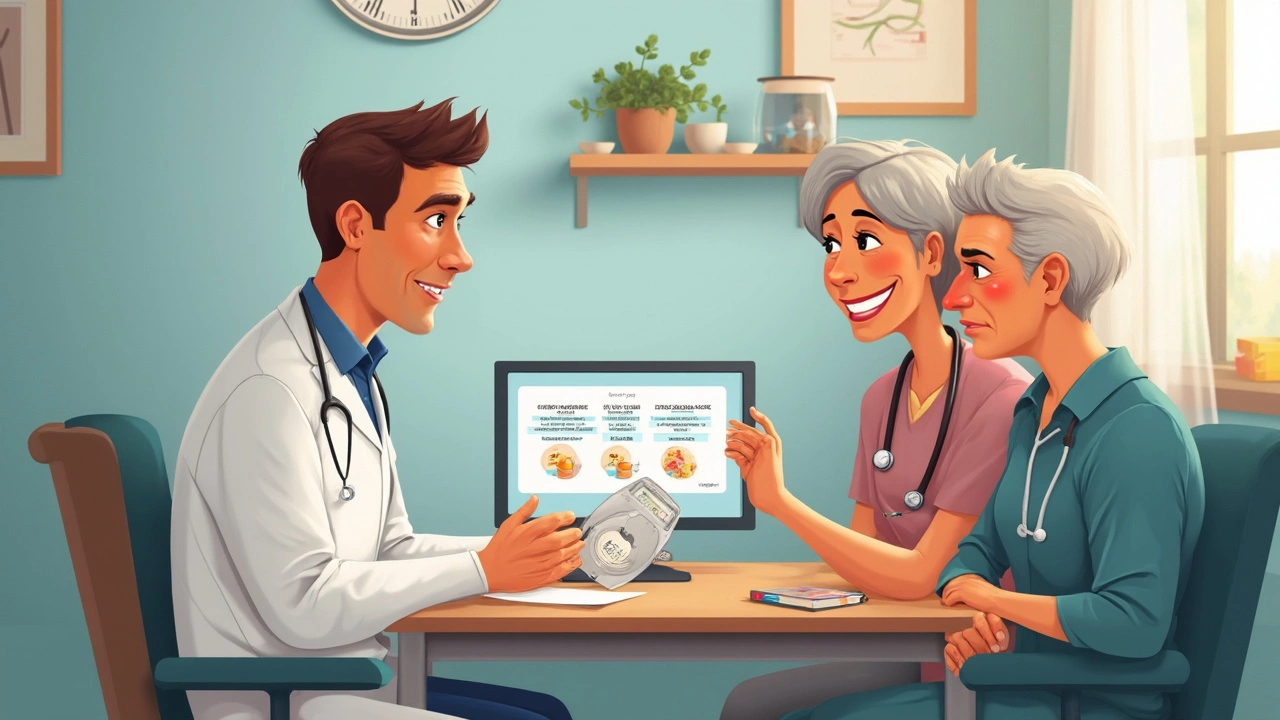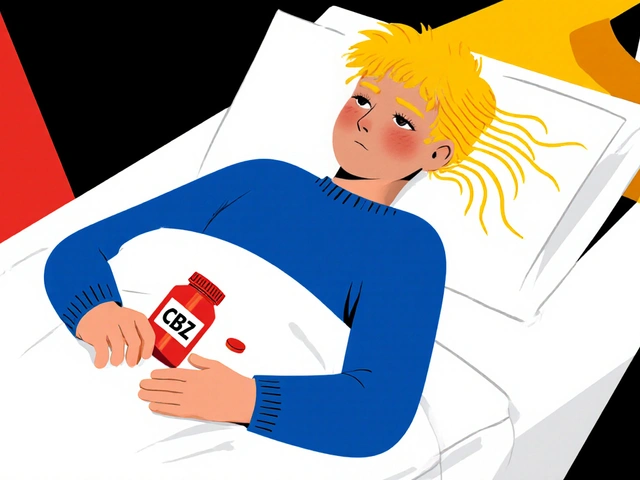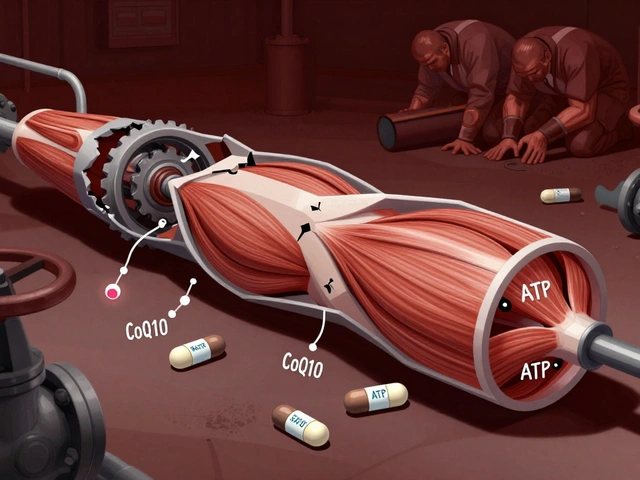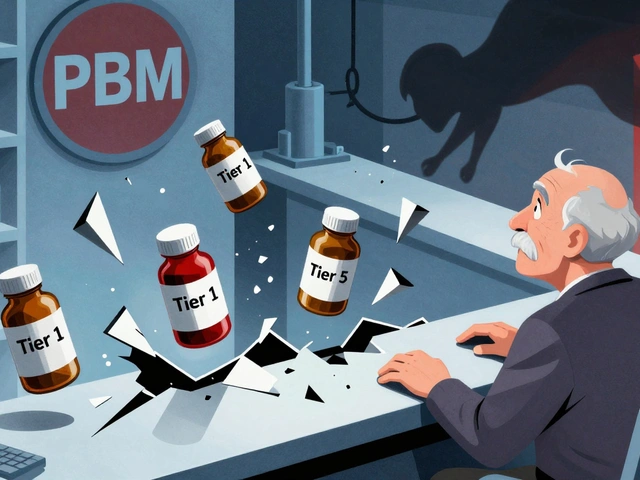
So, you want to know what else is out there instead of amlodipine for blood pressure? You're not alone—side effects like swollen ankles or a nagging cough have sent plenty of people searching for a swap. But jumping to a new medication isn’t as simple as picking a new snack at the store. Each of these meds works in a different way, and what’s great for one person might not fit someone else.
This guide breaks down seven of the main alternatives to amlodipine, showing how they stack up in real life. I’ll cover what each one does, what makes it helpful, and what annoyances or risks could pop up along the way. You’ll get the good, the bad, and the practical tips that actually matter when you’re staring at a box of pills and wondering what’s going to get the job done with the least hassle.
Whether your doctor mentioned a new med or you just want ammo for your next appointment, you’ll be able to walk in armed with real, concrete info—minus the medical jargon. Let’s break it down, one option at a time.
- Lisinopril
- Losartan
- Atenolol
- Hydrochlorothiazide
- Diltiazem
- Doxazosin (Cardura)
- Felodipine
- Comparison and Final Thoughts
Lisinopril
Lisinopril is one of the most common alternatives to Amlodipine for controlling high blood pressure. It’s an ACE inhibitor, which means it helps your blood vessels relax by blocking a hormone that tightens them up. This allows blood to flow more easily, so your heart doesn’t have to work as hard.
Lots of doctors reach for lisinopril first, especially if you’re dealing with conditions like diabetes or heart failure on top of your blood pressure. Not only that, but it's been around for decades, so its safety profile is well understood.
Pros
- Reduces blood pressure effectively, especially in people with diabetes or kidney problems.
- Shown to help protect your kidneys—big deal if you’re diabetic.
- Can lower your risk of stroke and heart attack, a nice bonus on top of blood pressure control.
- Usually taken once a day, pretty easy to remember.
- Generic versions are very affordable in most pharmacies.
Cons
- The nagging dry cough annoys about 1 in 10 people who take it—some folks can’t stand it.
- Not great if you’re pregnant; it can cause serious birth defects.
- May cause dizziness right after you start, especially if you stand up fast.
- Less effective for lowering blood pressure in Black adults when used alone, so sometimes it’s paired with another med.
- Can bump up your potassium levels—something your doc will probably check in your bloodwork.
Lisinopril has been a go-to in the blood pressure world for a reason, and it's worth asking about if you’ve had trouble with swelling or other side effects from Amlodipine. But keep in mind, a dry cough or those potassium changes can mean it’s not for everyone. Don’t be surprised if your doctor wants to do a blood test a few weeks after starting this one just to be sure it’s not causing problems in the background.
| Approximate Cost (Generic, 30-day Supply) | $4–$10 |
|---|---|
| How Fast Does It Work? | Within a week, but full effect can take 2-4 weeks |
Losartan
Losartan steps up as a common swap when people can’t handle amlodipine for high blood pressure. If you see anything about "ARBs," that means angiotensin receptor blockers—losartan fits right into that class. The job of losartan is to relax blood vessels, making it easier for your heart to pump and dropping blood pressure in the process.
This med is pretty popular because it doesn’t just help with blood pressure—it also protects your kidneys, especially if you’ve got diabetes. A lot of doctors reach for it in people with heart problems or those at high risk for strokes.
Pros
- Effective for high blood pressure and heart failure
- Kidney protection, especially in diabetes
- Less likely to cause a persistent cough compared to ACE inhibitors like lisinopril
- Generally well-tolerated—most people don’t notice many side effects
- Can be combined with other blood pressure meds for a bigger effect
Check this out: According to data from 2024, around 1 in 5 people who needed an amlodipine alternative did well on losartan without needing yet another med switch.
Cons
- Not as effective at lowering blood pressure in some African American patients when used alone
- Can mess with kidney function or potassium levels (your doc will usually run blood tests)
- Shouldn’t be used in pregnancy—it’s a big no-go for pregnant women
- Possible dizziness, especially when standing up fast
- Rarely, can cause swelling in the face or mouth—tell your doctor fast if this happens
If you’re weighing your options, losartan scores points for being versatile and generally low on annoying side effects. But, like everything else on this list, it isn’t perfect. Always ask about blood monitoring if you start on it, since keeping an eye on your kidneys and potassium really matters.
Atenolol
If your blood pressure or heart feels like it's running a marathon every day, Atenolol might pop up as an option. It's a beta blocker, so it slows your heart rate down and lightens how hard your heart has to work. Doctors have used atenolol since the 1970s for high blood pressure, chest pain (angina), and sometimes even for heart rhythm issues.
Unlike amlodipine, which is a calcium channel blocker working mostly on your blood vessels, atenolol works straight at the heart. That can make it a safer choice for folks who’ve had a heart attack or those dealing with an irregular heartbeat.
Pros
- Reduces heart rate and blood pressure, which can protect your heart after a heart attack
- Can help prevent migraine headaches in some people
- Usually doesn’t cause swelling in the legs like amlodipine (goodbye, puffy ankles)
- Often used if you also have anxiety or palpitations
- Been around for decades, so doctors really know what to expect with it
Cons
- Can make asthma or breathing problems worse (never ideal if you’re short of breath)
- Might cause tiredness, cold hands or feet, or slow your pulse a little too much
- May impact mood or cause sleep problems in some people
- Not as effective for blood pressure reduction in Black patients, especially if used alone
- If you stop suddenly, it can spike heart rate and blood pressure—always taper off with your doctor
Here’s a quick look at how atenolol compares in terms of side effects versus amlodipine and another common med:
| Medication | Most Common Side Effect | Extra Perks |
|---|---|---|
| Atenolol | Tiredness, cold hands/feet | Can help with migraines & anxiety |
| Amlodipine | Swollen ankles | No effect on asthma |
| Lisinopril | Dry cough | Kidney protection (for diabetics) |
Still, atenolol’s role in managing high blood pressure is solid, especially if you need some extra heart protection alongside your amlodipine alternative. Just chat with your doctor about breathing issues or low moods before making the switch.
Hydrochlorothiazide
Hydrochlorothiazide is one of the classic drugs doctors use to tackle high blood pressure. If Amlodipine isn’t doing the job or you’re struggling with fluid retention, you’ve probably heard this med mentioned in the same breath as “water pills.” That’s exactly what it is—a thiazide diuretic that helps your body dump extra salt and water through your pee. Less fluid means less pressure pushing against your blood vessels, which brings down your numbers on that all-important cuff.
This medication pops up in a ton of blood pressure combinations too. For folks who have stubborn hypertension, adding hydrochlorothiazide to another med isn’t rare. Doctors like it because it’s been around forever, it’s cheap, and for lots of people, it just plain works.
Pros
- Often lowers blood pressure within a few weeks
- Helps with swelling caused by fluid retention
- Usually taken just once a day—easy routine
- Generic so it won’t break the bank
- Works well with other hypertension meds
Cons
- Peeing more often, especially when you first start
- Can lower your potassium levels—which may cause muscle cramps
- If you get dehydrated easily or sweat a lot, watch out for dizziness
- Might slightly increase risk of gout in folks prone to it
- Blood sugar can go up a little, so people with diabetes need to monitor closely
Want some numbers? In big studies, adding hydrochlorothiazide to a blood pressure routine knocked systolic readings down by an average of 6-15 mmHg. Not the highest out there, but often enough to tip you into your doctor’s safe zone.
| Effect | Typical Change |
|---|---|
| Systolic blood pressure | -6 to -15 mmHg |
| Onset of action | 2-3 weeks |
Tip: If your doctor suggests hydrochlorothiazide, try to take it in the morning. That way, you won’t be running for the bathroom at night. And don’t skip your blood tests—keeping an eye on electrolytes is a must to dodge nasty surprises like low potassium.

Diltiazem
If amlodipine isn't your thing (maybe the swelling or flushed face is getting old), diltiazem is one of the most common alternatives in the world of calcium channel blockers. It's often recommended for people who want to manage both blood pressure and certain heart rhythm problems, giving it a bit more range than some other meds in the same family.
Diltiazem works by relaxing the muscles in your heart and the blood vessels. This makes it easier for your heart to pump and helps lower that stubborn high blood pressure. It’s also useful if you’re dealing with angina (chest pain) or irregular heartbeats like atrial fibrillation.
One big difference? Diltiazem usually causes less ankle swelling than amlodipine. For a lot of folks, that’s a make-or-break issue. Diltiazem comes as a tablet, capsule, or even an extended-release version if you hate popping pills multiple times a day.
According to the American Heart Association, "Calcium channel blockers like diltiazem can be a good choice for patients who experience side effects from other medications or who need both blood pressure and heart rate control."
Let’s dive into the tradeoffs you actually care about:
Pros
- Often causes less swelling than amlodipine
- Helps with both high blood pressure and heart rhythm issues
- Available in extended-release forms for easy dosing
- Can be taken with or without food
- Very effective for chest pain (angina)
Cons
- Might slow your heart rate too much (especially with heart rhythm meds)
- Some people get headaches or constipation
- Can interact with other heart medications (especially beta blockers)
- Possible dizziness or fatigue if you’re sensitive to blood pressure drops
- Needs regular monitoring of heart rate and blood pressure
Here’s a quick look at how diltiazem fits in with some key numbers:
| Effect | Diltiazem | Amlodipine |
|---|---|---|
| Reduces Blood Pressure | Yes | Yes |
| Helps Heart Rhythm | Yes | No |
| Typical Dosing | 1–2x per day | 1x per day |
| Major Side Effect | Slow heart rate, constipation | Swelling |
If managing both blood pressure and heart rhythm is on your radar, diltiazem might be worth asking your doctor about. Just make sure to keep tabs on heart rate and let your pharmacist know everything else you’re taking, since it's not shy about drug interactions.
Doxazosin (Cardura)
Doxazosin—maybe you’ve heard the name if you’ve got both hypertension and an enlarged prostate. This med is part of the alpha-blocker family, which works a bit differently from others on this amlodipine alternatives list. Instead of pulling water out of your body or relaxing your heart, it targets certain receptors on your blood vessels, telling them to chill out and widen up. That helps drop your blood pressure and can give extra help if you have trouble with peeing because of an enlarged prostate (BPH).
Usually, doctors use doxazosin when other meds aren’t doing the trick or if you need that BPH fix too. It’s not as common for first-timers, but it fills a solid spot for people juggling more than one condition.
Pros
- Two-for-one: Treats both high blood pressure and BPH. Super handy if you’re dealing with both issues at once.
- Can lower blood pressure fast—some folks see a difference after the first dose.
- Doesn’t mess much with your electrolytes or kidney function.
- Might cause fewer sexual side effects compared to beta blockers or some other hypertension meds.
Cons
- First-dose effect: That first pill can drop your blood pressure way down—standing up too quickly could make you pass out or feel super dizzy.
- Not everyone tolerates it long-term; dizziness and fatigue are pretty common complaints.
- Usually not the first choice for plain old high blood pressure.
- It can interact with other meds, especially if you’re already on pills for prostate issues.
Here’s a quick look at how doxazosin fits into the mix of commonly prescribed blood pressure alternatives:
| Medication | Main Use | Bonus Benefit |
|---|---|---|
| Doxazosin | Blood pressure, BPH | Aids urinary flow |
| Lisinopril | Blood pressure, heart, kidneys | Good for diabetes |
| Losartan | Blood pressure | Protects kidneys |
If you’re thinking about swapping from amlodipine to doxazosin, give your doctor the whole picture—every med you’re taking, and definitely mention any prostate symptoms. This one’s good at multitasking, but you’ll want a close eye on any sudden drops in blood pressure, especially if you’re just starting out or adjusting doses.
Felodipine
If you’re looking for another calcium channel blocker like Amlodipine, felodipine sits in the same family but comes with its own twists. It does the job by relaxing blood vessels, which helps bring down blood pressure. Doctors often reach for felodipine when people can’t handle some of the side effects from amlodipine or need something a bit more targeted for stubborn high blood pressure.
One thing to know: felodipine is a slow-release med—usually taken once a day. Your body gets a steady dose, which smooths out those up-and-down patches some people feel with other meds. Fun fact: a study found felodipine works just as well as amlodipine at lowering blood pressure, but people sometimes have less swelling in their feet and ankles. That’s a big deal if puffy ankles from amlodipine are messing with your day.
Pros
- Works 24/7 with once-a-day dosing (super easy to remember)
- Similar effect to Amlodipine for lowering blood pressure
- Tends to cause less swelling in feet/ankles versus amlodipine
- Can be used in combination with other hypertension meds for more control
- Useful if you need to avoid beta-blockers or ACE inhibitors (like if you have asthma or a nagging cough)
Cons
- Still in the same family, so can cause headaches, flushing, and dizziness
- Can interact badly with grapefruit (no grapefruit juice!)
- Not the first pick if you’ve got heart failure or bad liver disease
- Can be pricier than generic amlodipine at some pharmacies
Here’s a quick look at how felodipine compares to amlodipine in terms of side effects, based on clinical trial data:
| Side Effect | Amlodipine | Felodipine |
|---|---|---|
| Swelling (ankles/feet) | 11-15% | 7-10% |
| Headache | 8% | 9% |
If you’ve tried Amlodipine and got tired of the swelling or want another long-acting blood pressure med that’s easy to take, felodipine could be worth a chat with your doctor. Just watch your menu for grapefruit.
Comparison and Final Thoughts
Swapping Amlodipine alternatives really boils down to weighing results against real-life nuisances. Each option works differently in your body, and side effects are the dealbreaker for most folks. If you’ve been frustrated by swollen feet or nagging headaches from amlodipine, rest easy—there are plenty of ways to tackle hypertension.
Lisinopril and losartan are super popular, partly because they're great for folks with diabetes or kidney issues. Atenolol works especially well if you also get anxiety or your heart likes to race. If money matters, hydrochlorothiazide is often dirt cheap and it's been around forever—just don't skip the extra bathroom trips. Diltiazem and felodipine are solid for people who can't handle amlodipine’s swelling side effect but want to stay in the same medication family. And for guys with an enlarged prostate, doxazosin knocks out two problems at once: blood pressure and those midnight bathroom runs.
It’s worth looking over the basics side by side. Here’s a quick cheat sheet for comparing all seven choices:
| Medication | Main Use | Common Pros | Common Cons |
|---|---|---|---|
| Amlodipine | Hypertension, Angina | Once daily, strong BP control, rare serious side effects | Swelling, headache, flushing |
| Lisinopril | Hypertension, Heart Failure | Protects kidneys, especially in diabetes | Dry cough, rare swelling of lips |
| Losartan | Hypertension, Kidney Protection | No cough, helps with kidney issues | Dizziness, sometimes raises potassium |
| Atenolol | Hypertension, Fast Heart Rate | Helps with anxiety/palpitations | Fatigue, cold hands, can worsen asthma |
| Hydrochlorothiazide | Hypertension | Cheap, works for lots of people | Frequent urination, low potassium |
| Diltiazem | Hypertension, Angina | Less swelling than amlodipine | Can slow heart too much, constipation |
| Doxazosin | Hypertension, BPH | Improves urination, good for prostate | Dizzy on standing, occasional fluid retention |
| Felodipine | Hypertension | Similar to amlodipine but maybe less swelling | Flushing, headache, ankle swelling |
Your doctor will help tailor the blood pressure plan based on what your body needs and what you can actually live with day to day. Got diabetes, kidney issues, or other conditions? That matters. Lots of people end up needing a combo of meds for true control since none of these are magic bullets. If you notice anything odd or annoying with a new med, speak up right away—there are tons of solid options, and nobody needs to suffer just to keep their numbers in check.
Don’t sweat the choices. Compared to 30 years ago, we’re spoiled for options, and doctors have their pick of tried-and-true meds for every situation. Focusing on what fits your lifestyle and health history makes all the difference. When it comes to Amlodipine alternatives, a bit of trial and error often pays off big time in the long run.









14 Comments
Lisinopril works by blocking a hormone that tightens blood vessels. It’s a solid ACE inhibitor. Takes about a week to feel it. You might get a dry cough. Some folks can’t stand that. It’s cheap too. Check potassium levels. It can lower stroke risk. Avoid if you’re pregnant. A simple once‑daily pill.
Oh the grand tapestry of pharmaco‑logic, where each molecule claims a slice of our fleeting mortality 😊 a we must choose wisely the next elixir that shall tame the relentless tide of hypertension – lest we become slaves to swollen ankles and restless nights. Yet, let us not be blinded by the minimalistic allure of a single pill; the universe of alternatives is as vast as a philosopher's library, each with its quirks, its whispers of side‑effects, its promise of solace.
Losartan is decent but not a miracle. It avoids the cough from ACE inhibitors, which is nice. Still, you’ll need bloodwork. Nothing groundbreaking here.
Doxazosin, a name that often slips under the radar, is an alpha‑blocker that simultaneously tackles hypertension and benign prostatic hyperplasia with a surprising elegance The dual action is a boon for patients juggling both conditions yet the initial dose can produce a dramatic orthostatic hypotension that catches even seasoned clinicians off guard It is crucial to start low and titrate slowly as the body acclimates to the sudden vasodilation The drug’s pharmacodynamics involve antagonism of alpha‑1 receptors, leading to smooth muscle relaxation in vascular and prostatic tissue Consequently, many report improved urinary flow alongside a modest blood pressure reduction however the side‑effect profile includes dizziness fatigue and occasional headache The absence of significant electrolyte disturbances makes it a favorable option compared to thiazide diuretics yet the risk of syncope remains a concern especially in the elderly or those on concomitant antihypertensives It is also noteworthy that doxazosin does not appear to impair renal function, a distinct advantage over some ACE inhibitors that can elevate creatinine levels The medication does not require routine potassium monitoring, simplifying follow‑up visits However practitioners must remain vigilant for rare but severe reactions such as angio‑edema or severe hypotension that may necessitate immediate cessation The overall therapeutic value lies in its unique ability to address two distinct pathologies with a single agent, reducing pill burden and potentially enhancing adherence for patients burdened by polypharmacy
Atenolol feels outdated but works if you have tachycardia.
Hey there! I totally get how confusing it can be to swap meds 🙃 If you’re worried about a dry cough from lisinopril, maybe try losartan – it’s not prone to that. Also keep an eye on potassium levels; a quick blood test can catch issues early. Let me know if you need more tips! :)
Ah, the noble quest for the perfect antihypertensive-one might as well be searching for the Holy Grail while juggling a bag of oranges. Of course, every doctor will tell you "just pick the cheapest generic" as if that were a moral imperative, when in reality the side‑effect profile is a minefield of coughs, ankle swelling, and the occasional kidney warning. So go ahead, pop a thiazide, but don’t be surprised when you’re sprinting to the bathroom at three in the morning. It's all part of the grand design of modern medicine, where convenience trumps patient comfort, and the only thing more reliable than a prescription pad is the endless cycle of follow‑up appointments.
Dear community, I would like to offer a concise overview of the alternatives to amlodipine. Lisinopril and losartan are both ACE/ARB class agents that provide renal protection, especially in diabetic patients. Atenolol, a beta‑blocker, may be suitable for individuals with concomitant tachyarrhythmias. Hydrochlorothiazide remains a cost‑effective diuretic, though monitoring electrolytes is essential. Diltiazem and felodipine are calcium‑channel blockers with a lower incidence of peripheral edema. Doxazosin offers the added benefit of treating benign prostatic hyperplasia alongside hypertension. Each option merits discussion with your healthcare provider to tailor therapy to your comorbidities and lifestyle.
In light of the comprehensive list provided, one must critically assess the pharmacodynamic nuances of each agent. The prolonged half‑life of felodipine confers once‑daily dosing convenience, yet its propensity for headache warrants patient counseling. Diltiazem’s dual action on heart rate and vascular tone is advantageous for those with concomitant arrhythmias, but vigilance for bradycardia is mandatory. Furthermore, the synergistic potential of combining a thiazide diuretic with an ACE inhibitor may amplify antihypertensive efficacy while mitigating individual side‑effects, provided renal function is closely monitored. The clinician’s acumen lies in orchestrating these variables to achieve optimal blood pressure control without compromising quality of life.
Yo, if cost is a big deal, the cheap water pill hydrochlorothiazide is the way to go. Just remember to drink enough water and keep an eye on your potassium. Simple stuff.
I hear you. A simple drug like hydrochlorothiazide can save you money and lower blood pressure. Just watch the bathroom trips.
Choosing a blood pressure med is like picking a favorite emoji – you want one that fits your vibe 😅. If ankle swelling is your nemesis, try felodipine; it’s similar to amlodipine but often gentler on the feet. If you’re avoiding a cough, skip ACE inhibitors and go for an ARB like losartan. Keep your doctor in the loop and maybe add a dash of humor to the office visit!
One might argue, with the utmost decorum, that the art of selecting an antihypertensive is tantamount to curating a fine anthology of literature; each entry-be it a calcium‑channel blocker, an ACE inhibitor, or an alpha‑blocker-brings its own prose, its own cadence, its own inevitable footnotes of adverse effects. Yet, the discerning reader must peruse the fine print: a cough here, a swollen ankle there, a fleeting episode of dizziness, all worthy of meticulous annotation. In this grand narrative, the physician serves as the editor, guiding the patient through revisions, ensuring the final manuscript of therapy is both eloquent and tolerable.
Dear reader, I sincerely hope this overview assists you in navigating the myriad of antihypertensive options 😊. Should you require further clarification or wish to discuss personal circumstances, please feel free to reach out. Your wellbeing remains our paramount priority. 🌟